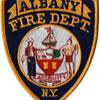Sign in to follow this
Followers
0

Another fire/police battle...
Started by
FDNY 10-75,
-
Recently Browsing 0 members
No registered users viewing this page.

Started by
FDNY 10-75,
No registered users viewing this page.